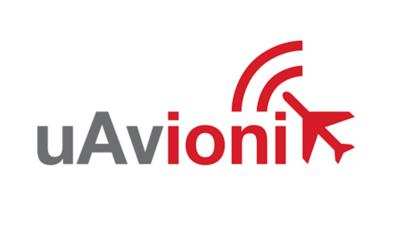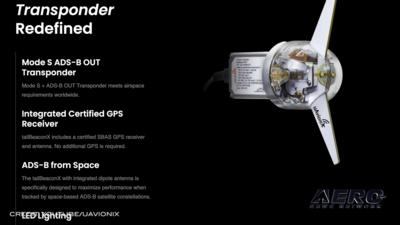New System Safeguards SkyLine UAS BVLOS Operations
On 28 March 2023, uAvionix, the Montana-based aviation technology concern founded in 2015 for purpose of advancing the integration of Unmanned Aircraft Systems (UAS) into the National Airspace System (NAS), announced the imminent introduction of its truSky ADS-B “spoofing” detection for the company’s SkyLine Uncrewed Aircraft System (UAS) Beyond Visual Line of Sight (BVLOS) services.

The aforementioned innovation bolsters pilot and air traffic controller confidence by scrutinizing a given aircraft’s ADS-B signal and validating it is indeed originating from subject aircraft and not being fraudulently broadcast as a means to fake or spoof the signal.
ADS-B spoofing refers to the malicious manipulation of ADS-B signals to transmit false information about an aircraft’s position, velocity, and identification. Such malfeasance interferes with Detect and Avoid (DAA) and Air Traffic Control (ATC) systems, compromises airspace awareness, and occasions risks to safety and security. ADS-B is an eminently useful, safety-enhancing DAA technology; in the absence of validation, however, the risk that incoming ADS-B information is misleading is ever-present. The hazards arising from ADS-B spoofing have been discussed in numerous articles and reports, which caution pilots to be wary of relying on unvalidated ADS-B in critical applications.
Enter ADS-B validation—within the context of which the term validation denotes the process of checking and verifying the accuracy and integrity of data transmitted by aircraft. Validation can include cross-checking ADS-B information with other sources of air traffic data and monitoring for anomalies or inconsistencies in the signals. The goal of ADS-B validation is to ensure transmitted information is valid and accurate, thereby affording UAS operators and air traffic controllers the best possible data upon which to predicate key decisions pertaining to aircraft in flight and the maintenance of safe separation between such.
uAvionix’s truSky validation process utilizes a network of multiple low-cost and low-profile deployed dual-frequency (1090MHz and 978MHz) ADS-B ground receivers to evaluate signals transmitted from aircraft. The system instantly compares received signals to confirm they’ve originated from a transmitting aircraft’s actual position. When a sufficient number of sensors is available, truSky employs a variety of methods by which to backwards-calculate an aircraft’s position and compare such to the position contained within subject aircraft’s ADS-B transmission. By dint of Doppler information, multilateral timing, and aircraft kinetics, truSky’s calculation produces a validation score on each aircraft—thereby providing the confidence and safety margin required for BVLOS operations. The antecedent process requires a tightly integrated and secure network of receivers with precision timing capabilities—such as those provided by the uAvionix SkyLine platform.

An FAA whitepaper titled: FAA Position On Use of ADS-B for Alerting and Guidance published in 2017 concludes thus:
“For DAA systems, the implications of this policy are as follows: DAA Warning guidance may only be generated on ADS-B tracks that have been validated … . DAA guidance to regain well-clear may only be generated on tracks that have been validated. DAA Caution suggestive guidance may be generated by unvalidated ADS-B tracks. If the DAA system is being integrated with the UAS flight control system to automate maneuvers, the guidance system may only maneuver automatically against ADS-B tracks that have been validated.”
Prior to the advent of truSky, the business of validating ADS-B signals came at immense cost, requiring high-dollar MLAT sensors, primary radar, or onboard Traffic Collision Avoidance Systems (TCAS) to correlate aircraft positions.
uAvionix’s truSky is being piloted in numerous locations in the United States, and is available as a component of the company’s SkyLine UAS BVLOS service or as an API for integration into UAS GCS, UTM, or ATM platforms.
 Unfortunate... ANN/SportPlane Resource Guide Adds To Cautionary Advisories
Unfortunate... ANN/SportPlane Resource Guide Adds To Cautionary Advisories ANN FAQ: Turn On Post Notifications
ANN FAQ: Turn On Post Notifications ANN's Daily Aero-Term (04.29.24): Visual Approach Slope Indicator (VASI)
ANN's Daily Aero-Term (04.29.24): Visual Approach Slope Indicator (VASI) ANN's Daily Aero-Term (04.28.24): Airport Marking Aids
ANN's Daily Aero-Term (04.28.24): Airport Marking Aids ANN's Daily Aero-Linx (04.28.24)
ANN's Daily Aero-Linx (04.28.24)




